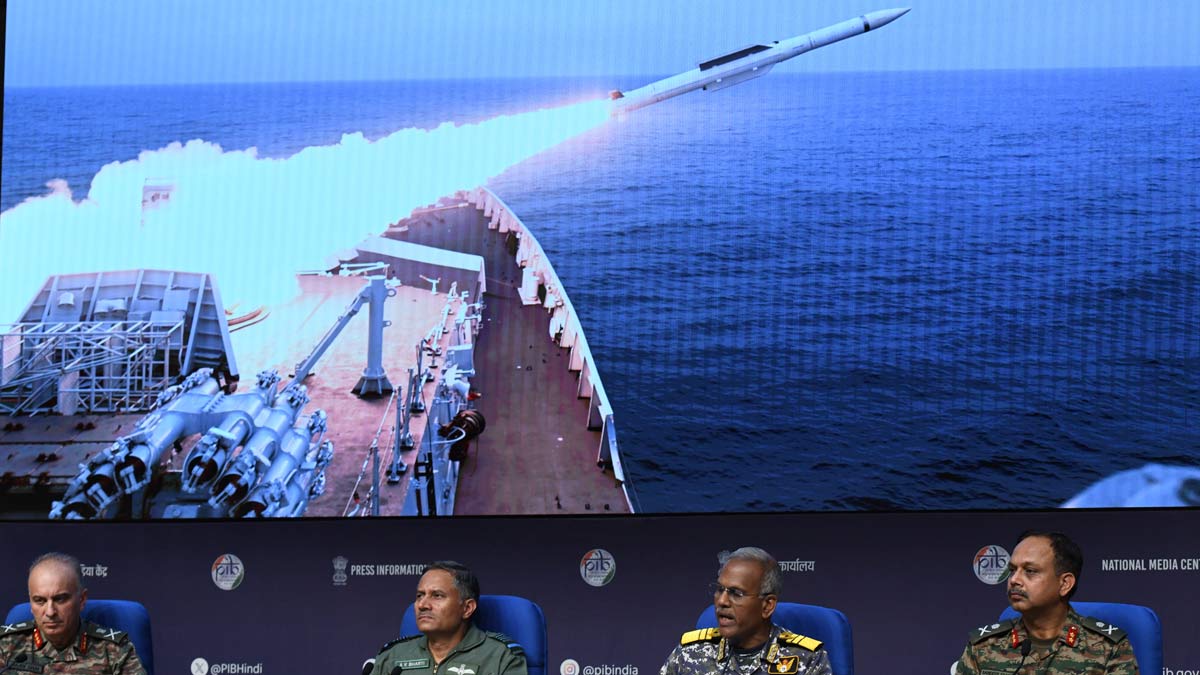Revealed: When India decided to strike nine targets in Pakistan during Operation Sindoor
 Navy began testing and refining its tactics and procedures at sea by conducting multiple weapon firings in the Arabian Sea within 96 hours of the April 22 terrorist attack in Kashmir’s Pahalgam | Sanjay Ahlawat
Navy began testing and refining its tactics and procedures at sea by conducting multiple weapon firings in the Arabian Sea within 96 hours of the April 22 terrorist attack in Kashmir’s Pahalgam | Sanjay Ahlawat
India had shortlisted a total of 21 targets in Pakistan, among which nine were hit during Operation Sindoor by the ground, naval, and air forces, Deputy Chief of Army Staff Lieutenant General Rahul R Singh revealed on Friday.
The decision to engage these nine targets was taken in "the final hour", the Deputy COAS (Capability Development and Sustenance) said. The Indian Air and Naval forces were asked to join Operation Sindoor as it would send the enemy the message that they were up against an integrated force. It was made a priority that India "should always be at the top of the escalation ladder".
ALSO READ | From HAMMER bombs to SCALP missiles, all you need to know about weapons used in 'Operation Sindoor'
Deputy COAS Singh was speaking at the New Age Military Technologies event organised by the Federation of Indian Chambers of Commerce and Industry (FICCI).
A lot of data collected through human intelligence and technology was utilised in the planning of the mission and selection of targets, Lieutenant General Rahul R Singh said. "So a total of 21 targets were identified, out of which nine targets we thought would be prudent to engage... It was only the final day or the final hour that the decision was taken that these nine targets would be engaged," ANI quoted him as saying.
Elaborating further on the integrated offensive, he reportedly added: "A considered decision was taken that it will be a tri-services approach to send the right message that we indeed are an integrated force... An important consideration was that we should always be at the top of the escalation ladder."
ALSO READ | China wanted a 'live lab' to test weapons; ensured Pakistan had 'live updates' on India's vectors during Operation Sindoor: Deputy COAS
He also pointed out that managing to end the conflict at the right time — avoiding further damage or achieving a desired outcome — is no mean feat. "When we reach a military objective, we should try and put a stop to it... War is easy to initiate, but it's very difficult to control. So I would say that was a very masterly stroke that was played to stop the war at an appropriate time."
A key factor in selecting 7 May as the launch date for Operation Sindoor could have been Pakistan’s economic vulnerability, as the country prepared for a board meeting of the International Monetary Fund on 9 May for a $1.3 billion grant. A Pakistani counterstrike, involving significant military expenditure, would be scrutinised closely by the IMF, reducing the likelihood of escalation. With the latest developments, Pakistan may have jeopardised its case.
ALSO READ | Operation Sindoor India's biggest, most successful anti-terror strike: Narendra Modi
Operation Sindoor marked the first time the Integrated Defence Staff (IDS) played an operational role, and it delivered. Headed by General Chauhan, it is tasked with integrating and coordinating the efforts of India’s armed services, and it rose to the occasion. The Army took the lead role, tasked with hitting seven of the nine designated targets — most located near the LoC and within range of tactical weapons — while the Air Force played a secondary role, largely to avoid escalating tensions between the two nuclear-armed neighbours through the use of fighter aircraft.
Defence